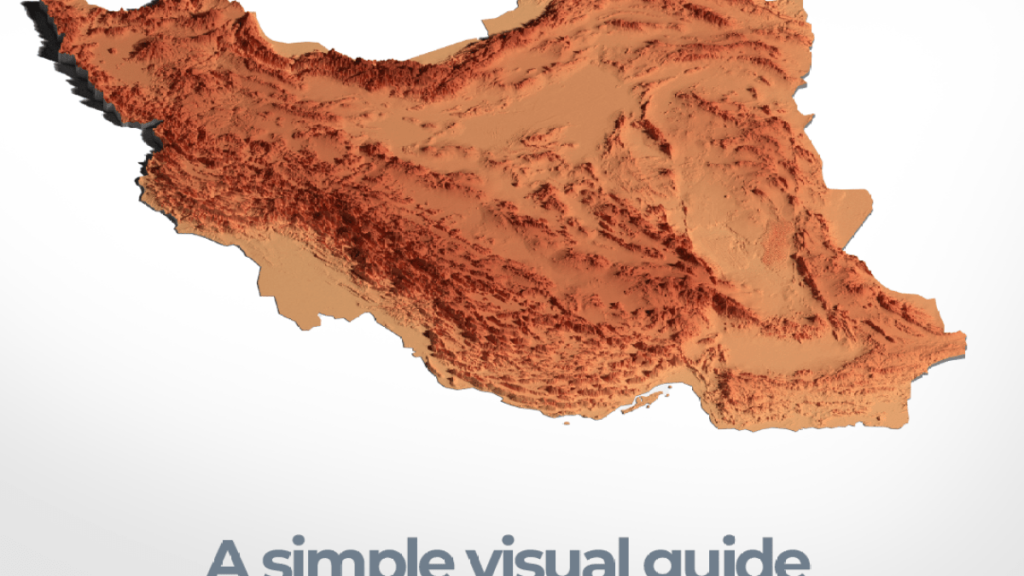Iran has re-emerged at the centre of international attention, following Israeli attacks on the Middle East’s second-largest country on June 13.
Stretching from the Caspian Sea in the north to the Gulf of Oman in the south, Iran’s landscape is as varied as its history, with key access to critical waterways, including the Strait of Hormuz, through which 20 percent of the world’s oil flows.
Iran’s history spans millennia, making it one of the world’s most ancient and culturally rich nations, continuously inhabited and influential throughout history.
In this visual explainer, Al Jazeera provides a snapshot of Iran’s geography, key cities, population makeup, and ethnic diversity.
Iran at a glance
With a population of 92 million, Iran is the 17th-largest country in the world by population and land area.
Iran’s nominal gross domestic product (GDP) is $418bn, ranking it 36th in terms of the economy size. It has an unemployment rate of about 7.2 percent.
The country’s adult literacy rate is 89 percent, with youth literacy nearing 99 percent, though these rates vary between rural and urban areas.
The country is rich in oil and gas, ranking as the world’s ninth-largest oil producer and third-largest natural gas producer.

How big is Iran?
Located in Western Asia, Iran is the second-largest country in the Middle East after Saudi Arabia and the 17th-largest in the world, covering approximately 1.65 million square kilometres (636,000 square miles).
Iran shares land borders with seven countries, the longest being Iraq, followed by Turkmenistan, Afghanistan, Pakistan, Azerbaijan, Turkiye and Armenia.
Iran covers about one-sixth the equivalent land area of the United States, nearly as large as the state of Alaska.
It is about one-sixth the size of Europe, about one-fifth the size of Australia, roughly half the size of India and about 80 times larger than Israel.

Where are Iran’s main population centres?
Most of Iran’s 92 million people live in the western half of the country, where the terrain features rugged mountains alongside fertile valleys and river basins that sustain much of the population.
With 9.6 million inhabitants, Tehran has been the capital since 1795 and is the country’s largest city. Situated beneath the Alborz Mountains, Tehran’s history dates back more than 6,000 years.
Mashhad, in the northeast, is Iran’s second-largest city with 3.4 million people and a history spanning more than 1,200 years. It is a major religious and cultural centre and is home to the Imam Reza Shrine, which brings in millions of pilgrims from around the world.
Isfahan, the third-largest city, is home to some 2.3 million people. More than 2,500 years old, the city was once the capital of the Safavid Empire, which lasted from 1501 to 1722. Isfahan hosts major educational institutions and is a centre for textiles, steel and manufacturing, along with nuclear and aerospace industries.
Other populous cities across Iran include: Shiraz (1.7 million), Tabriz (1.7 million), Karaj (1.6 million), Qom (1.4 million) and Ahvaz (1.3 million).

Demographic breakdown
Nearly 60 percent of Iran’s population is below the age of 39, according to figures from the United Nations Statistics Division.
The country’s median age is 33-34 years, and about 77 percent of Iranians live in urban areas.
The largest age groups in Iran are those aged 30-34 and 35-39, meaning most of the population was born after the 1979 Islamic Revolution that toppled the Pahlavi Shah regime.
However, there has been a significant emigration of Iranian professionals in recent years, largely driven by economic hardship.

What are Iran’s ethnicities?
Iran is a highly diverse country, both ethnically and culturally. Persians make up approximately 61 percent of the population, while significant minority groups include Azerbaijanis (16 percent), Kurds (10 percent) and others, such as Lurs (6 percent), Arabs (2 percent), Baloch (2 percent) and Turkic groups (2 percent).
Iran is predominantly Shia Muslim, making up about 90 percent of the population, while Sunni Muslims and other Muslim sects account for roughly 9 percent. The remaining 1 percent includes roughly 300,000 Baha’i, 300,000 Christians, 35,000 Zoroastrians, 20,000 Jews, and 10,000 Sabean Mandeans according to the Minority Rights Group.
In border regions such as Kurdistan, Khuzestan and Sistan-Baluchestan, ethnic groups play a key role in shaping the country’s ethnic and religious diversity as well as its regional politics.
While Persian (Farsi) is the official national language, many regions across the country speak a variety of other languages.



